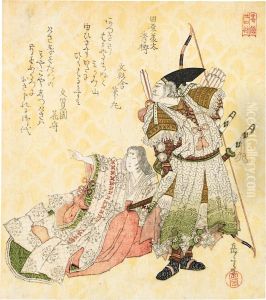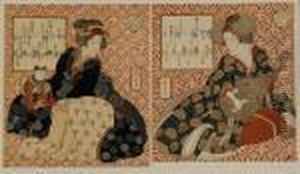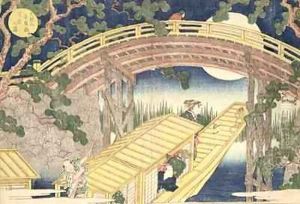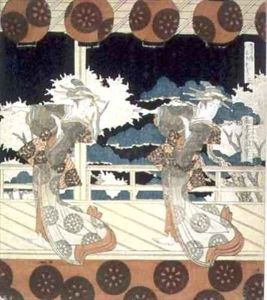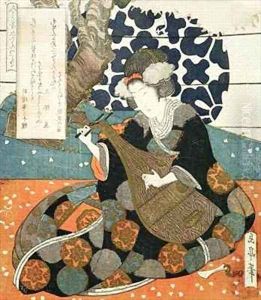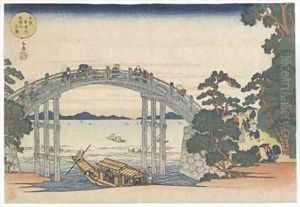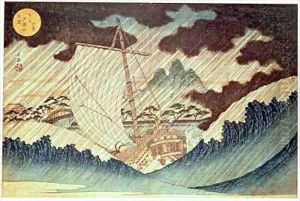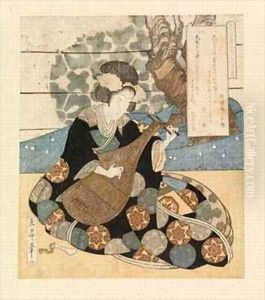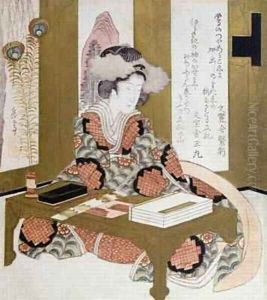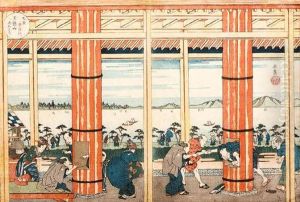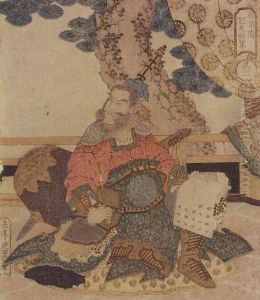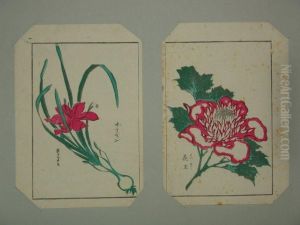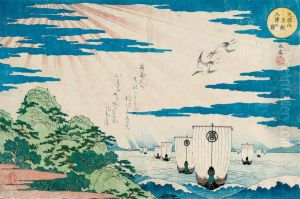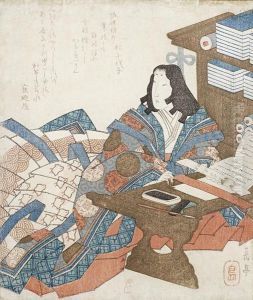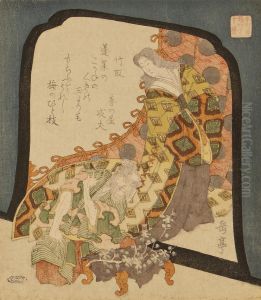Yashima Gakutei Paintings
Yashima Gakutei, born Saitō Heishichi in 1786, was a Japanese artist known for his work in ukiyo-e, a genre of Japanese art which flourished between the 17th and 19th centuries. Gakutei is particularly recognized for his contributions to the development of the surimono genre, a luxurious and often privately published form of woodblock print that combined images with poetic inscriptions, catering to an educated and literate audience.
Gakutei's early life remains somewhat obscure, but it is known that he was active in the artistic circles of Edo (present-day Tokyo) from the early 19th century. He was a pupil of Totoya Hokkei, who was a student of the great master Katsushika Hokusai. This lineage placed Gakutei in the midst of the rich cultural and artistic environment of the period, allowing him to refine his skills and develop his unique style.
Throughout his career, Gakutei was known for his innovative techniques and the incorporation of Western artistic elements into his works. This was a time when Japan was slowly opening up to the West, and Gakutei, like many artists of his time, was influenced by the new ideas and technologies that were entering Japan. His surimono prints are particularly noted for their intricate details, vibrant colors, and the use of embossing and metallic pigments, which added a three-dimensional quality and luxurious feel to his work.
Gakutei's subject matter varied widely, including landscapes, portraits of kabuki actors, mythical creatures, and scenes from classical literature and history. His work in haiga, a combination of haiku poetry and painting, also stands out as a testament to his versatility and deep appreciation for the literary and visual arts.
Despite his significant contributions to the world of Japanese art, Gakutei's name is not as widely recognized as some of his contemporaries. However, his work has been appreciated more in recent years, with art historians and collectors alike acknowledging his role in the evolution of ukiyo-e and surimono. Gakutei passed away in 1868, leaving behind a legacy that continues to inspire and captivate audiences with its beauty and sophistication.
